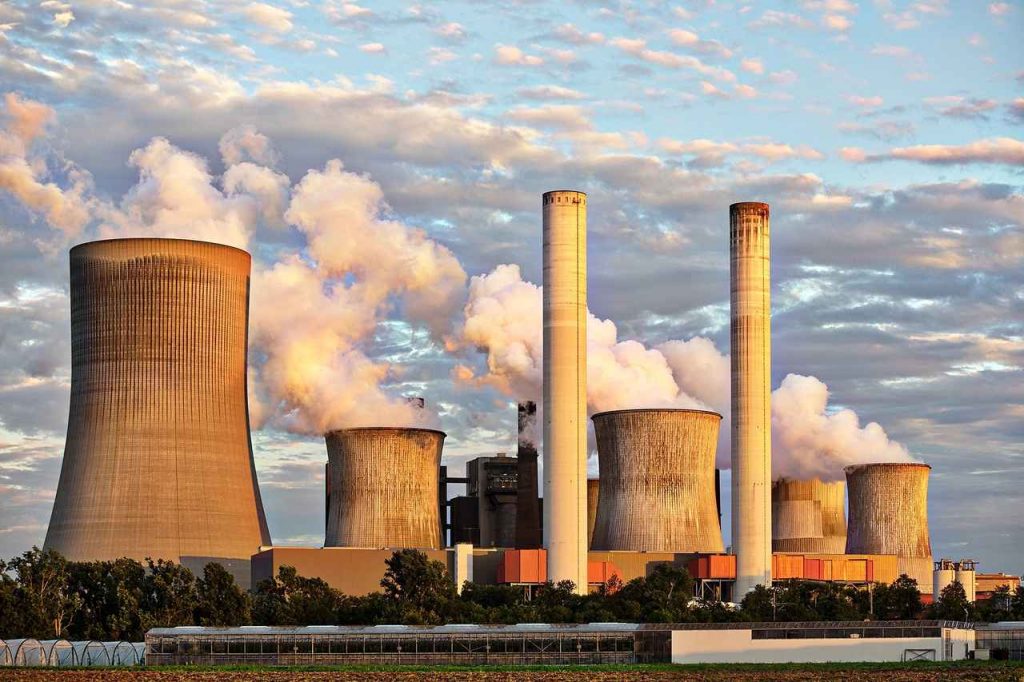The reduction of polluting gases in your industry will bring great benefits to the environment and to your company. Understand the importance!
Reducing the emission of polluting gases has been one of the most debated issues in the world in recent years. Since most of them are emitted by industrial processes, in the year 2018 alone, about 37 billion tons of carbon dioxide (CO2) were released into the atmosphere, being only 1 of the many polluting gases that are emitted every day. CO and NOx (nitrogen oxide), and other important gases, for example, together produce around 478.4 thousand tons per year.
Often these high emission rates are due to several causes that can be from a poorly adjusted combustion process, due to several factors, to the raw material used in your industry, as is the case with clinker in the cement industry.
However, it seems that this reality is about to change. After several negotiations and studies on the pollution and the harm that these gases can cause, in 2015, in the city of Paris, France, 195 countries signed an agreement to reduce this emission, mainly of CO2, due to the high rate of release of that gas.
In this post we will discuss why it was necessary to reach this agreement and what is the importance of reducing polluting gases for your industry.
Why are these gases generated?

In some industries, such as cement, lime or cellulose, for the calcination of their raw materials, they use rotary kilns that are very similar and can cause the emission of various polluting gases, such as CO2, THC and NOx.
These gases are generated in the combustion necessary to generate the high temperature required in the process. The lime and clinker furnaces additionally release the CO2 that was trapped in the raw material in the form of carbonate.
Part of the polluting gases generated, such as CO2, is inherent in the manufacturing process, which cannot be eliminated, but all can have their volume reduced with some existing technologies. In this way, CO and THC can be reduced with improved combustion, SOx and NOx can be reduced with the use of alternative fuels and process adjustments.
How important is the reduction of these gases for your industry?

The emission of these gases into the environment intensifies the greenhouse effect, in addition to causing acid rain that is formed by the contact of sulfur dioxide, for example, in the air that comes in contact with water drops and causes the process.
However, by adopting a solution to reduce the emission of these polluting gases, your industry will not only benefit the environment and the people who are affected by them, but will also benefit the industry itself, as these solutions will also help to improve everything your production process.
Regarding costs, in general, they increase, not decrease, and governments are obliged to penance fines for industries to evolve technologically; in many countries, factories have been forced to treat gases before releasing them into the atmosphere in recent decades, this contributes to the pressure that factories suffer to reduce costs, a very viable possibility is the use of more alternative fuels, that are cheaper, but the emission of polluting gases can be increased; some alternative fuels have more sulfur and chlorine than the more expensive traditional ones, and as a result, NOx and HCl emissions increase; others, however, how biomass contributes to the reduction of CO2 emissions; normally, alternative fuels have lower calorific value, higher humidity and dimensions, which can prejudice the process if a good preparation, dosage and combustion project are not developed, thus increasing the generation of CO and THC.
Solutions to reduce the emission of polluting gases in your industry

CO2 reduction in the industrial sector
Being one of the industrial sectors that emit the most CO2, the cement industry has these numbers due to the reaction of calcination in the clinker process, causing 35% of the feeding mass of the rotary kiln to become this gas.
Therefore, one of the best solutions to reduce this emission is the replacement of clinker by another material in the production of cement, such as Calcined Clay / Pozzolana for example, which can replace it by up to 50% in this process and drastically reduces CO2 in the industrial sector.
In addition, this substitution will reduce thermal consumption by 25% and electrical consumption of its cement production by 15%.
It is also possible to reduce CO2 emissions with the use of alternative fuels derived from biomass. Many plants have taken advantage of the regional availability of discards from the agricultural and from processing industry such as rice husks, wood dust, charcoal, etc.
Another direct way to reduce CO2 emissions is to increase the efficiency of the process, that is, to reduce fuel consumption for a production. This can be achieved by improving the thermal exchange between the combustion gases and the raw material, reducing thermal losses to the environment and maintaining the installation so that less ambient cold air is sucked into the process through cracks.
NOx reduction
Many industries are already required by law to adopt a more sustainable stance, however, due to the high temperatures of their furnaces, there is a significant emission of NOx and they end up being forced to implement after-treatment techniques; the most common injects ammonia which is a liquid to reduce this pollutant, which considerably affects its operating costs.
Therefore, Dynamis developed a complete and customized solution for each industry where, through data gathering, a simulation of the current operating condition and an engineering study involving methods and tools for calciner and rotary kiln evaluations, we were able to define which devices and processes will have more NOx reduction effect, which also results in a reduction in the cost for gas abatement. Among them is staged combustion in calciners and low NOx burners.
CO reduction
CO is generated by deficiency in combustion, both in the rotary kiln and in the calciner. Typically, the main source is the calciner, where temperatures are lower and where there is higher use of alternative fuels, which, in general, are more difficult to burn.
For this, Dynamis has solutions developed with the aid of CFD and with the experience from many projects and equipment in various industrial segments supplied by Dynamis. For rotary kilns, the improvement in combustion efficiency can be obtained through its D-Flame burner which, due to the optimized geometry of its burner tip and setting of the adjustment air that significantly improves the mixture of the secondary air with the fuel, which ends up resulting in better combustion and a reduction in the emission of CO. In the calciners, the location and form of fuel injection are essential for the reduction of CO.
Learn more about our solutions
Dynamis team

